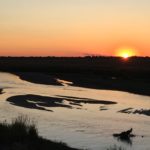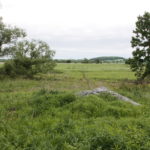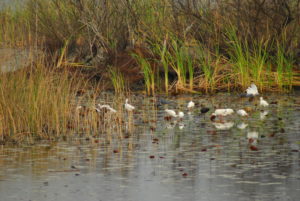 It’s common for naturalists to draw connections between places they visit. Think of John Muir, for example, reflecting in his Thousand Mile Walk to the Gulf, on the plants he found along the way and their similarities to plants he’d left back in Wisconsin. In the May/June issue of Omaha Magazine, I examine similarities between two places I’ve come to know, as well as the ways that sandhill cranes connect people to both places.
It’s common for naturalists to draw connections between places they visit. Think of John Muir, for example, reflecting in his Thousand Mile Walk to the Gulf, on the plants he found along the way and their similarities to plants he’d left back in Wisconsin. In the May/June issue of Omaha Magazine, I examine similarities between two places I’ve come to know, as well as the ways that sandhill cranes connect people to both places.
To read, open the link to the full issue and click to page 66.


